Almost 1 in 2 people will be diagnosed with cancer in their lifetimes. That is according to researchers who study cancer rates in developed countries like the US, UK and Canada. (source)
And that’s a scary statistic because everyone agrees: cancer is terrifying.
It seems to come out of nowhere, spreads fast inside someone’s body, and to get rid of it we must literally poison ourselves (with chemotherapy) until our hair is falling out. And after all that, we still can’t relax because the cancer could always return.
What is cancer exactly? It’s when a person’s cells begin dividing in an uncontrolled way, often showing up as a lump called a tumour somewhere in their body, and it’s caused by accumulated mutations in our DNA.
The Emperor of All Maladies is a great place to understand the many sides of cancer:
- The history. The book focuses on the advances made after 1850, because before that there were almost zero treatments for cancer.
- The science. The author often explains the biology or mechanisms behind the cancer treatments, as he is a well-educated cancer researcher himself.
- The ‘personality.’ The subtitle is “A biography of cancer,” because we can better understand cancer by imagining it having personality traits: cancer is invasive, adaptable, cunning, moody, and elusive.
About the author
Siddhartha Mukherjee (Wikipedia) is an Indian-American cancer physician and researcher, and he’s an assistant professor of medicine at Columbia University. He’s a #1 New York Times bestselling author and won the Pulitzer Prize for this book.
🧓 1. The Cancer Era: In ancient history, cancer was less common because fewer people reached old age
For most of history, cancer was rarely mentioned.
This is surprising because other diseases, like tuberculosis, were often mentioned in ancient documents. But cancer didn’t seem to happen very often. In 440 BC the Greek historian Herodotus told the story of Atossa, a Persian queen with a lump on her breast, who told one of her slaves to cut out the tumour. That is one of the few times that cancer appears in ancient history.
According to author Siddhartha Mukherjee, cancer is far more common today mostly because people are living longer.
Cancer is exponentially more likely to happen in people who are older, like those over the age of 60. In the modern world, people are able to survive longer, so cancer rates have risen. Two thousand years ago, people died a lot during childhood and middle age from infections and diseases that are today prevented with antibiotics, vaccines, and sanitation.
Life expectancy is probably the biggest factor in increasing cancer rates, but not the only one:
- Carcinogens in our environment, both unknown ones and known ones like smoking and asbestos,
- Screening for cancer that is more common. In the past, many people must have died with cancer without even knowing it,
- Diagnoses that are more accurate. In 400 BC, the Ancient doctor Hippocrates was the first to label cancer. He called it karkinos, the Greek word for crab, because the blood vessels on a tumor reminded him of a crab in the sand. But he probably used that word for all kinds of visible lumps.
While reading the online reviews for this book, I noticed many readers were disappointed nutrition was barely mentioned. At the end, Mukherjee says that’s because there is not enough research to say one diet is best for avoiding cancer. However, some proven advice to decrease our risk of cancer includes giving up smoking, drinking less alcohol, eating less red meat, eating more fiber, and avoiding obesity.
If you’re interested, there’s another great book to help us not die of cancer. It’s called… well…. How Not to Die by Dr. Michael Greger. Great title, isn’t it?! Anyway, his advice for reducing most diseases, including cancer, centers on eating mostly whole unprocessed plant foods like vegetables, fruits, whole grains, and legumes. No surprise there, really. For avoiding breast cancer, he recommends foods like soy, mushrooms, and green tea. For prostate cancer, studies show promising benefits from flaxseeds and cruciferous vegetables (like broccoli, cabbage, and brussels sprouts).
Ancient history almost never mentions cancer, while today it seems very common. The difference is today most people survive to an older age, when cancer is exponentially more likely to occur. We also have more accurate tools to screen and diagnose cancer, and novel carcinogens like cigarettes.
⚫ 2. Black Bile: Ancient doctors like Galen believed all diseases were caused an imbalance of bodily fluids
For 1,300 years, the medical world believed cancer was caused by a secret fluid in the human body called “black bile.” This theory of cancer was shaped in 160 AD by Galen, one of the most influential doctors ever. In fact, he believed ALL diseases could be traced back to an imbalance of four fluids called “humours” in the human body.
That incorrect theory was studied and passed down for over 1,000 years. One side effect was that surgery against cancer was very uncommon. Doctors did not often try to cut out tumors because they assumed it would be ineffective. If cancer was caused by a fluid found throughout the body, then cutting off one visible symptom of that disease wouldn’t cure it anyway.
Classic cancer treatments included:
- Purging bodily fluids according to Galen’s instructions,
- Bizarre natural remedies like goat’s dung or crab’s eye paste,
- Or—quite often—doing nothing. (Looking back, that may have been the best option.)
Then in 1533, a series of books on human anatomy were published by Andreas Vesalius from Brussels. He couldn’t find Galen’s black bile anywhere. Vesalius was unsatisfied with how little his medical professors knew about the human body, so he personally dissected many corpses. Then he hired illustrators to make some of the first detailed drawings of the inner human muscles, veins, and organs. His books were a revolution and today Vesalius is considered the founder of modern human anatomy. After that, the medical world moved past Galen’s theory fluids, creating space for different treatments to be tested for cancer, including surgery.
A quick analysis: Throughout The Emperor of all Maladies, I see Siddhartha Mukherjee returning to 2 major themes in the history of cancer:
- We see cancer in our own image. The Ancient Greeks were preoccupied with the new hydraulic technologies like water canals and irrigation, so they imagined the body to be a system of fluids, too. Much later, during the age of new vaccines, cancer would be seen in terms of viruses.
- Progress is made by overcoming human hubris. It took over 1,000 years for someone to truly look and see if Galen’s black bile was in the human body. When every medical authority says that something is true, even without proof, it’s hard for any one person to say the opposite. As we’ll see, later the same pattern repeats with modern cancer theories and treatments.
Beginning with Galen in 160 AD, the medical world believed cancer was caused by a bodily fluid called “black bile.” This theory survived until the middle ages, when Vesalius discovered the fluid had never actually existed.
🏥 3. Radical Surgery: Early surgeons like Halsted believed cutting more would cure more cancer patients, without scientific proof
Surgery during the Middle Ages was brutal and risky. A dank basement, a rusty knife, a patient that was heavily drunk, screaming and crying. And the worst part? No understanding of bacteria so patients would often die of terrible infections.
Almost at once, two revolutionary advances changed everything:
- Anesthesia, developed in 1846, made painless surgery possible.
- Antiseptic, first used in 1865, drastically cut down infections after surgery.
Those discoveries allowed surgeons to perform operations that had been impossible, push the boundaries of their craft, and greatly improve their knowledge.
Cancer surgery soon became more common. Joseph Lister, the Scottish surgeon who invented antiseptic, removed a breast cancer tumour from his sister in 1869. She survived the operation, but died 3 years later after the cancer spread, or metastasized, to other parts of her body. More and more cancer operations were performed by Lister and other surgeons, who slowly improved their methods.
In 1896, X-ray treatment was first used for cancer by a medical student named Emil Grubbe. Just one year after X-ray tubes were invented, Grubbe had the great idea to point one at an elderly woman’s cancer tumour. And it seemed to work because her tumour did become smaller. However, future doctors would learn that X-rays are mainly useful treating local tumors, and too much radiation causes mutations that lead to new future cancers. By old age, Grubbe had many fingers amputated and tumors removed from his face, due to his lifelong exposure to radiation.
Let’s pause for a moment. We’ve just talked about some huge medical advances like anesthesia, antiseptic, and X-rays. Because this is a summary, we can only mention each discovery briefly and explain how it fits into the larger history of cancer. If you’re feeling curious about the details, then please pick up a copy of The Emperor of All Maladies. Because it is a book with almost 600 pages, the author has a lot of time to describe the stories of each scientific discovery, the mechanisms of how they work, and even the scientists’ personal lives. So please remember that in this summary we’re really trying to see the big picture as fast as possible. Okay, let’s continue!
In the 1880’s, a young surgeon in New York name William Stewart Halsted invented the “radical mastectomy” for breast cancer. This involved cutting out not just the breast tissue, but the deeper muscles and even into the collarbone.
The radical surgery was much riskier, and left the patient disfigured, but hopefully cured. His theory was that cancer patients suffered relapses after surgery because not all of the cancer had been cut out. Halsted was obsessive, innovative, and a highly productive surgeon… despite strong addictions to both cocaine and morphine.
For almost 90 years, radical surgery was performed on over 500,000 women for breast cancer. Then in 1967, the first real scientific trial of the procedure revealed… it provided no benefit.
Siddhartha Mukherjee says radical surgery didn’t help because breast cancer patients fall into two groups:
- The first group has early-stage cancer with a local tumour. For them, simply removing the tumour is enough for a cure, and radical surgery was way too much.
- The second group has later-stage cancer that has already spread to other parts of their body. For them, radical surgery was not nearly enough to stop the cancer.
So, how could such an extreme, yet unproven procedure last for almost 90 years up to 1967? The answer is human hubris, that core theme of the book we already mentioned.
From the beginning, Halsted’s own data was questionable, with over 1/2 of patients dying within 3 years, from a cancer that was supposed to be gone from their body. But radical surgery became an accepted practice in the field, and it soon became a point of pride to the radical surgeons. To them, the benefits of radical surgery had become self-evident and therefore didn’t require testing.
One of the earliest cancer surgeons, John Hunter, operated in the 1760’s even before the days of anesthetic. He said if a cancer was not operable, the surgeon could only provide “remote sympathy.” Two of the most chilling words ever, in my opinion. That reminds me of what the modern doctor Paul Kalanithi wrote in his bestselling book When Breath Becomes Air: “When there’s no place for the scalpel, words are the surgeon’s only tool.”
That means medicine is limited, and doctors can’t cure everything, and sometimes the best one can do is help patients and their families to accept the inevitable death with dignity. But in the middle of writing his book, Dr. Kalanithi himself was diagnosed with a fatal cancer, which suddenly made the problem of death and dying far more real and vivid. There’s a good reason his book became one of the most popular and top-rated books on medicine ever, and I reckon that it’s well worth reading.
Read more in When Breath Becomes Air by Paul Kalanithi
In 1846 and 1867, anesthesia and antiseptic were discovered, finally making surgery painless and safe from infection. Cancer tumors were removed locally through surgery and later X-rays. In the 1880’s, Halsted began radical surgeries for breast cancer, but it was proven to have no benefit only 90 years later after 500,000 women had been greatly disfigured.
💊 4. Chemotherapy Develops: In the 1940’s, doctors found certain poisons could kill cancer a little faster than killing the patient
Can you believe that mustard gas was the first hint of chemotherapy? This is where the story of cancer becomes really strange and fascinating…
During World War 1, mustard gas (also called nitrogen mustard) was used to poison and kill thousands of soldiers. It was a major horror of the war.
But in 1942, some researchers quietly discovered that mustard gas had an unexpected effect—it especially depleted human bone marrow cells. Later two researchers from Yale (named Goodman and Gilman) injected mustard right into the blood of leukemia patients, and found there were some fantastic remissions, but the cancer quickly returned.
Leukemia is a cancer of the blood—it often happens when way too many white blood cells are produced in the bone marrow. This “liquid cancer” was an early target of cancer researchers because they could count the blood cells in a sample, and that allowed them to understand whether a treatment was helping or not. With solid tumours, it’s a lot more difficult to measure treatment effectiveness.
In 1947, Sidney Farber discovered another one of the first chemotherapy treatments. He was a doctor studying leukemia in a small basement office of the Children’s Hospital in Boston. Farber knew blood cells were starved if they didn’t have certain micronutrients, like B12 or folic acid. So he tried giving leukemia patients an “anti-folate” called aminopterin that would actually block their blood cells from absorbing folic acid, because it was designed to mimic the shape of the real nutrient. The blood cells were starved, and the cancerous blood cells were especially starved because they’re most hungry for cellular growth.
Farber was able to keep a few childhood leukemia patients alive for 6 months after their diagnosis, a completely unprecedented result. It wasn’t a cure, but it was a huge leap forward.
Sidney Farber was also notable for being involved in some of the largest efforts to raise funds for cancer research:
- First with the Jimmy Fund, which relied on a “poster child” for cancer named Jimmy to raise enough money to build Farber’s own hospital building for children’s cancer in 1952. Today, Farber’s organization has grown to include thousands of workers at the Dana Farber Cancer Institute, where Siddhartha Mukherjee completed advanced training in cancer medicine.
- Second in partnership with Mary Lasker, a well-connected socialite who ran massive publicity campaigns to raise public donations and federal funds for cancer research, resulting in the massive 1971 National Cancer Act that provided $1.5 billion.
Let’s turn back to chemotherapy research again, what happened from the 1950’s to the 1970’s? You’ll notice the major advances followed a common pattern: more drugs, stronger drugs, longer treatment. More, more, more.
- In 1956, a researcher at the National Cancer Institute (NCI) continued chemotherapy much longer, produced the first cures of cancer in adults from chemo. Instead of stopping treatment as soon as symptoms were gone, he continued it until the level of a hormone called hcg produced by the tumor decreased to zero. That researcher, Min Chiu Li from China, was fired from the NCI for going against the protocol, as the positive results of his method only became clear months and years later.
- In 1957, two researchers combined multiple drugs, achieving much longer cancer remissions. They worked in the same office in the NCI and their names were unusually similar: Emil Frei and Emil Freireich. In 1961 the two Emils tried an even stronger treatment program with 4 different drugs called VAMP. At first they saw fantastic remissions, but later they were devastated when 95% of their patients relapsed with cancer in their brains, as the drugs couldn’t penetrate something called the blood-brain barrier.
- In 1968, a physician in Tennessee tried an even more extreme protocol and totally cured almost 30% of his leukemia patients. Donald Pinkel continued the chemotherapy for 2 years after a remission, injected drugs directly into spinal fluid to bypass the blood-brain barrier, added radiation and more drugs, and achieved almost miraculous cures.
- In 1973, a study in Italy led by Gianni Bonadonna found that adding chemotherapy after surgery for breast cancer prevented 1/6 of the women from dying, an absolutely stunning result.
When it came to cancer treatments, it seemed more equals better. However, there was one huge exception to that rule. In 1991, there was a new treatment called ABMT, it involved extracting some bone marrow from a cancer patient, then re-injecting it after chemotherapy treatment. This allowed doctors to give patients 5-10 times higher doses of drugs, because the old limiting factor was that all of a patient’s bone marrow cells would die from chemo.
Through passionate grassroots activism, the bone marrow transplants became available to the general population even before the scientific trials had completed. 40,000 women underwent the extreme procedure, with over $2 billion spent, but in 1999 scientists concluded there was no medical benefit to bone marrow transplants. The only promising studies on the procedure had been done by a South African doctor named Werner Bezwoda, who had falsified the data in one of the largest cases ever of scientific fraud.
One of the most popular medical authors is Atul Gawande, who wrote bestselling books including “Being Mortal,” “The Checklist Manifesto,” and “Complications.” In that last one, he wrote “We look for medicine to be an orderly field of knowledge and procedure. But it is not. It is an imperfect science, an enterprise of constantly changing knowledge, uncertain information, fallible individuals, and at the same time lives on the line.”
I think that quote sums up the history of chemotherapy research and medicine in general. Researchers made choices based on their intuition, about what treatments to study next. Occasionally they make a step in the right direction, but more often the treatment does nothing or could even make the condition of patients worse. It’s a tricky, confusing business—giving people what is essentially poison to cure one of the worse illnesses.
Read more in Atul Gawande’s books…
Chemotherapy is giving poisons to a patient, poisons that happen to be a little more effective killing the fastest growing cells, which means cancer. In 1947, Sidney Farber found the first real chemo treatment, blocking leukemia from the nutrient folic acid. After that, chemo developed through adding longer treatment, more combination drugs, stronger doses, and even continuing chemo long after all symptoms were gone.
🚭 5. Focus on Prevention: Lowering cancer deaths through early screening and reducing smoking in society
So with all those new drugs and treatments, how was cancer medicine doing? In 1986, a careful study was published by Bailar and Smith found that cancer deaths had actually gone up by 8.7% over the past 30 years, which was a failure. They blamed a lack of focus on cancer prevention, as 80% of the National Cancer Institute’s budget was dedicated to treatment research.
Smoking was probably the biggest reason that cancer deaths were up. It seems difficult to believe, but for decades nobody really knew that smoking cigarettes caused lung cancer. The risk was hidden because almost everybody smoked. By the 1950’s, over 80% of men smoked, so it was like asking whether having two legs caused lung cancer. In 1947, a major study was published by Doll and Hill that found a clear connection to lung cancer, and the results were reinforced by followup studies. But the extremely profitable tobacco industry quickly fought back, sowing doubt about the research, saying more research was needed, and even funding their own research.
The link between smoking and cancer was undeniable only after a 1964 bombshell report from the Surgeon General, that summarized all the research. After some strong political lobbying by the tobacco industry, a weakly worded caution label was added to cigarette packages. In 1971, tobacco advertising was taken off television. But the most important thing was that everybody received the message: smoking causes cancer. For the next 20 years, smoking slowly and steadily declined, and lung cancer rates followed, dropping by over 50%. However, the cigarette makers have not given up. They have now shifted their focus to developing countries where there are fewer regulations, like India and China, which now contain hundreds of millions of tobacco consumers.
During that time, other important prevention techniques were discovered that allowed early screening of cancer. In 1952, the Pap smear was invented to detect early cervical cancer by George Papanicolau after—believe it or not—a research project studying the menstrual cycles of guinea pigs. In 1976, a Swedish study confirmed the benefits of mammography (X-ray photos to detect breast cancer tumors), but only for women over 55.
I think the history of cigarette advertising provides a great reason to study the psychology of influence and advertising. Edward Bernays wrote the classic book Propaganda in 1928 and he is often called “The Father of Public Relations.” While he did promote many good products, Bernays was also hired by cigarette companies.
One of his most notorious PR campaigns was called “Torches of Freedom” and it sent the message to a generation of women that smoking was not a taboo activity, but an expression of women’s empowerment and liberation. He hired women to march in a popular Easter parade, proudly smoking their “torches of freedom.”
Other propaganda techniques that Bernays describes in his book greatly resemble what is called “influencer marketing” today. He found the leaders of groups within society, and convinced or paid them to endorse a product. Like having a dentist association praise a certain brand of toothpaste or having a religious leader shake hands with a politician. He wrote, “If you can influence the leaders, either with or without their conscious cooperation, you automatically influence the group which they sway.”
In 1986, the important Bailar-Smith analysis found cancer deaths had actually gone up over 30 years, due to neglect of cancer prevention. Beginning with the Doll/Hill study in 1947, a link between cigarettes and lung cancer was established, despite a propaganda war with the cigarette makers, and finally by the 1990’s there was a decrease in both smoking and death. Better early cancer screening techniques also reduced deaths, with the Pap smear in 1952 and mammography in 1976.
🧬 6. Cancer Viruses and Genes: Searching for a unified theory behind all the causes of cancer
Now we’re going to see a very unusual stage of medical history: when scientists became obsessed with finding cancer-causing viruses.
That’s right, until almost 1970, the dominant medical theory was that cancers were all caused by undetected viruses. It began in 1910, when Peyton Rous did discover a virus called RSV that caused cancer… in chickens. But the real cause of the virus obsession, according to Mukherjee, was that many great medical advances were happening related to viruses. Diseases like polio and smallpox had been recently eradicated. So if cancer was caused by a virus, there was hope for a “cancer vaccine.”
However, cancer was a highly unusual disease because of the wide variety of causes it appeared to have:
- Cigarettes, asbestos, and some chemicals had been connected to cancer.
- Chronic inflammation caused by the Hepatitis B Virus also increased risk.
- Even a rare type of stomach bacteria called H. pylori caused gastric cancer.
Chemicals, inflammation, radiation, viruses, bacteria… all seemed to cause cancer. That left researchers very confused trying to understand the mechanism behind cancer. Most past treatments like chemotherapy were discovered through trial-and-error, but a unified theory would finally provide cancer research with direction.
There was another fringe theory that cancer was caused by abnormal chromosomes, which began in 1914 with a paper by Theodor Boveri. Sixty years later, scientists would find out this was the more correct theory because cancer was fundamentally caused by genetic mutations.
Here’s a quick timeline:
- In 1970, researchers found the RSV virus caused cancer in chickens because it contained a cancer-causing gene called src. Through a process called reverse transcription, that src gene became a part of the chicken’s DNA, resulting in uncontrolled cell division. So the virus caused cancer by manipulating the genetic process of the chicken.
- In 1976, two scientists named Bishop and Varmus discovered that human cells contain many genes that look very similar to src, the cancer-causing gene. They guessed that DNA mutations could transform those src precursors into full-blown cancer genes, which are called oncogenes.
- In the late 1970’s a researcher named Knudson elaborated that theory while studying a rare eye cancer called retinoblastoma, caused by the Rb gene. He said when some of our genes are mutated, they activate uncontrolled cell growth and/or stop suppressing tumours, becoming like a “jammed accelerator” or “missing brakes” in a car.
- In the 1980’s, those theories were proven correct when Robert Weinberg’s lab at MIT identified real cancer genes in the DNA of human cancer patients. And for the next 10 years, many new oncogenes were identified. Yet when Harvard scientists inserted a big dose of cancer genes into a mouse for the first time, the result was… a tiny bit of cancer. What could explain that?
Our genes seem to be full of precursor genes that may mutate into cancer genes. However, to really cause cancer, many mutations are needed. That explains why cancer works by risk factors. Smoking causes lung damage and mutations, which greatly increases risk of lung cancer, but it doesn’t guarantee someone will get lung cancer. And on the other hand, many non-smokers also get lung cancer, because their genes suffered enough mutations in other ways.
One of my favourite science-related books ever is Behave written by Robert Sapolsky, a Professor at Stanford who specializes in human behavioural biology and neuroscience. At the very beginning of that book, he explains how even the smartest researchers can get stuck into a type of “tunnel vision,” because they interpret almost everything according to their category of expertise.
Sapolsky wrote, “When you think categorically, you have trouble seeing how similar or different two things are. If you pay lots of attention to where boundaries are, you pay less attention to complete pictures.” For example, a teenager feels moody… a sociologist will say it’s because of the structure of society, a biologist will say it’s because of hormones, a family therapist will say it’s because of their relationships or thought processes. They all interpret the situation according to what they know best.
I guess that is why the Ancient Greeks, living in an age of hydraulic engineering breakthroughs, saw cancer as a disease of fluid imbalance. And 100 years ago, doctors living in an age of virus medicine breakthroughs, saw cancer as a disease that was fundamentally viral. Or as the classic expression says, “To the man with a hammer, everything begins to look like a nail.”
In 1910, an RSV virus was discovered to cause cancer in chickens, and the viral theory of cancer became dominant until the 1970’s. Then researchers slowly uncovered that cancer is a disease caused by mutations in our existing genes. Chemicals, radiation, inflammation, viruses and more… cause DNA mutations that “activate” genes for uncontrolled cell division.
🎯 7. Modern Targeted Treatments: Recent medications fight cancer more accurately, according to genetic pathways
In 2005, there was great news that cancer was down by 15%, through a combination of more treatments, early screening, and prevention programs.
However, most of the treatments continued to be old fashioned, like surgery, radiation, and chemotherapy. There was a big disconnect between the growing scientific understanding of cancer as a disease based in genes, and the old treatments that had been discovered long before that understanding. Most chemotherapy drugs were basically poisons, that killed the cancer cells a little faster than they kill the patient’ regular cells.
(There were a few notable exceptions, like targeted hormone treatments. In the 1940’s, they found blocking testosterone helped fight prostate cancers, by giving men estrogen. In 1968, they found blocking estrogen helped fight breast cancers, by giving women a drug called tamoxifen.)
The main problem doctors face is that cancer cells are almost identical to ordinary cells, so it’s extremely difficult to find some drug that will target cancer alone for destruction. But over time, the new genetic understanding of cancer has been providing us with some better and more targeted treatments:
- In 1986, researchers Wang and Degos found that trans-retinoic acid cured 75% of their patients with APL, an aggressive but rare type of leukemia. They saw an amazing response rate, especially for a non-toxic treatment that worked by targeting a genetic signalling pathway. The acid neutralized a certain protein created by the cancer cells, making them quickly mature and die.
- In 1995, the drug Herceptin was developed by Genentech, which targeted a cancer gene called Her-2 found in a minority of breast cancer patients. For early-stage patients, survival rates were increased by 33%, which represented a new revolution for cancer treatments
- In 1998, the medication Gleevec was found to be a game-changer for those with CML, another very rare type of leukemia. Before Gleevec, someone with this cancer may have survived 3 years. After Gleevec, they would survive maybe 30 years, their entire regular lifespan, as long as they kept taking the medication. It’s estimated 250,000 people are now alive today thanks to Gleevec.
Mukherjee believes this is just the beginning, there are now a couple dozen drugs available that target genetic pathways, but many more are in development. In 2009, a project called the Cancer Genome Atlas was completed. Researchers created a map of all the human cancer genes, finding that 50-80 separate genes were mutated in most cancers. That’s a lot, but they simplifies those genes into just 13 pathways of cancer growth. Those are 13 clear targets for future treatments, which for now represents the best hope we have of finding future cancer cures.
There was a growing disconnect between the genetic understanding of cancer and old-style treatments still being used. In the late 1990’s, researchers finally began producing drugs like Herceptin and Gleevec that directly target cancer’s genetic pathways. And countless more are in development.
- Write down 1 thing you could do to reduce your cancer risk. According to Mukherjee, some proven steps to decrease our risk of cancer includes giving up smoking, drinking less alcohol, eating less red meat, eating more fiber, avoiding obesity, and avoiding too much exposure to UV rays from the sun.
- Use data and numbers when making your next major change. Just like the radical surgeons, even the smartest people can be tricked by our human biases, if we’re relying on observation alone. Find some way to measure with numbers, whenever you’re making an important choice. For example, if you’re reading a personal finance book and following its advice, make a visual graph to keep track of how much money you’re saving each month. You’ll know much faster whether the advice is working for you or not.
- Write down 1 scientist you admire from this book and why. It’s important to have heroes, because personal growth can often become easier when we have a concrete model of a person we want to emulate. For example, I really liked the scientist Min Chiu Li from China, who kept giving patients chemotherapy long after the standard procedure, until their hcg hormone levels went to zero. He produced the first chemo-based cancer cures in adults, but was fired from the National Cancer Institute. Yet his actions demonstrated careful observation and the courage to try something different.

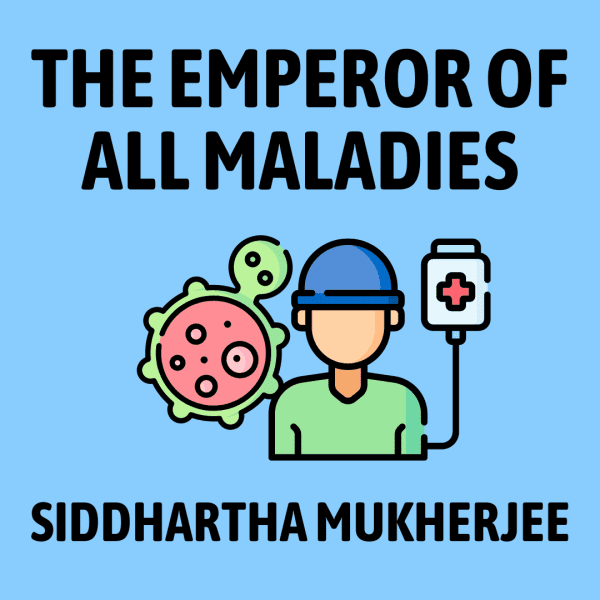
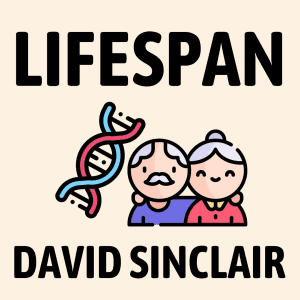


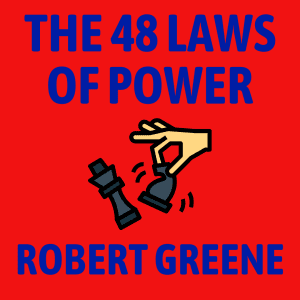
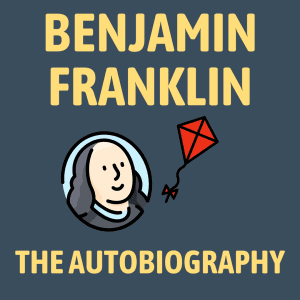
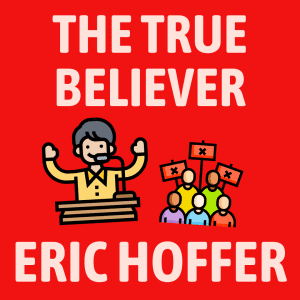
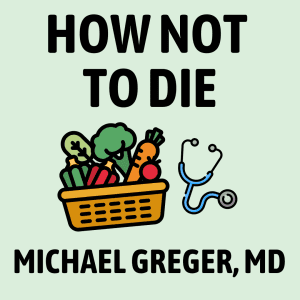
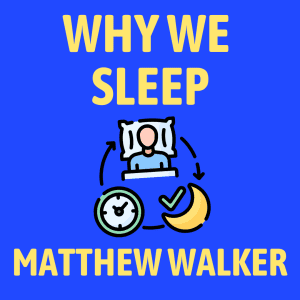
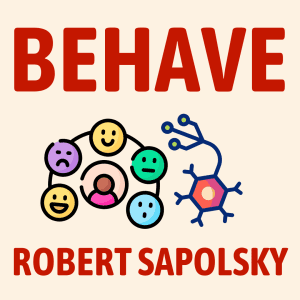













Community Notes